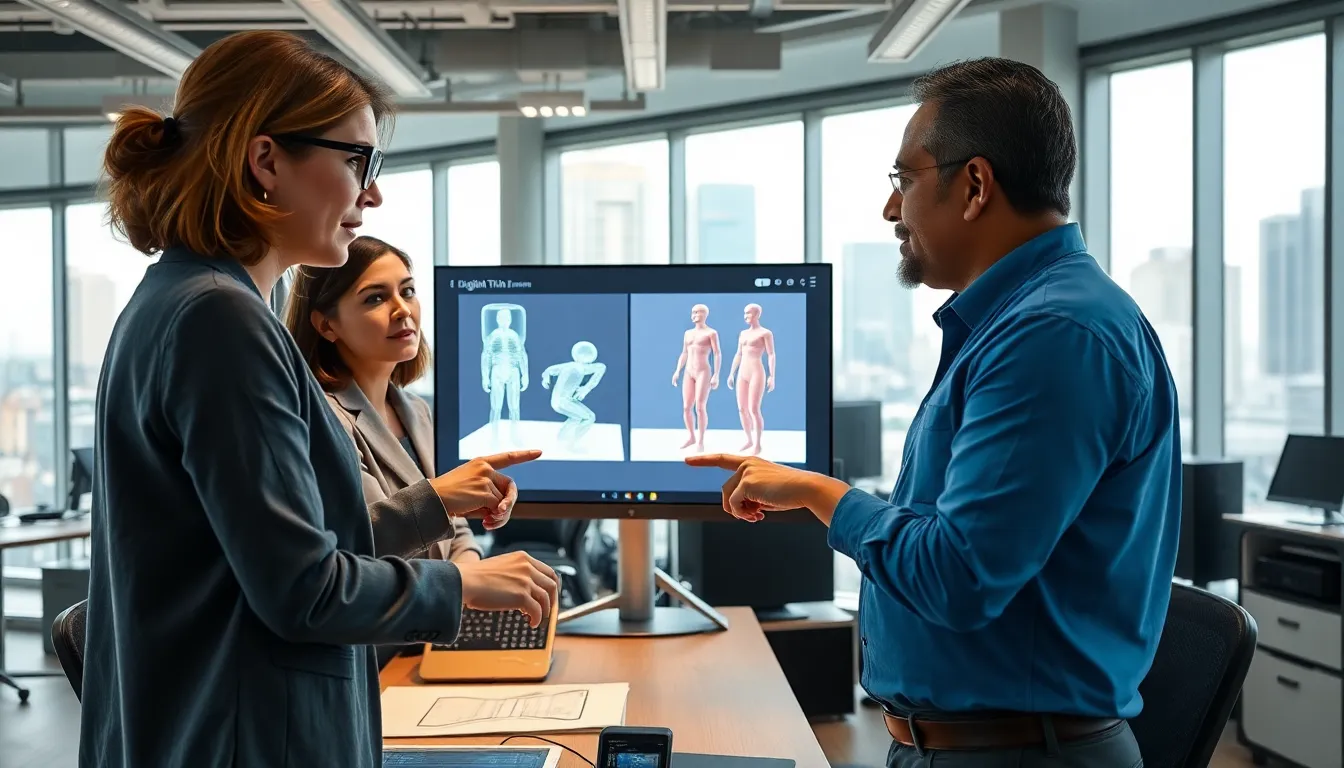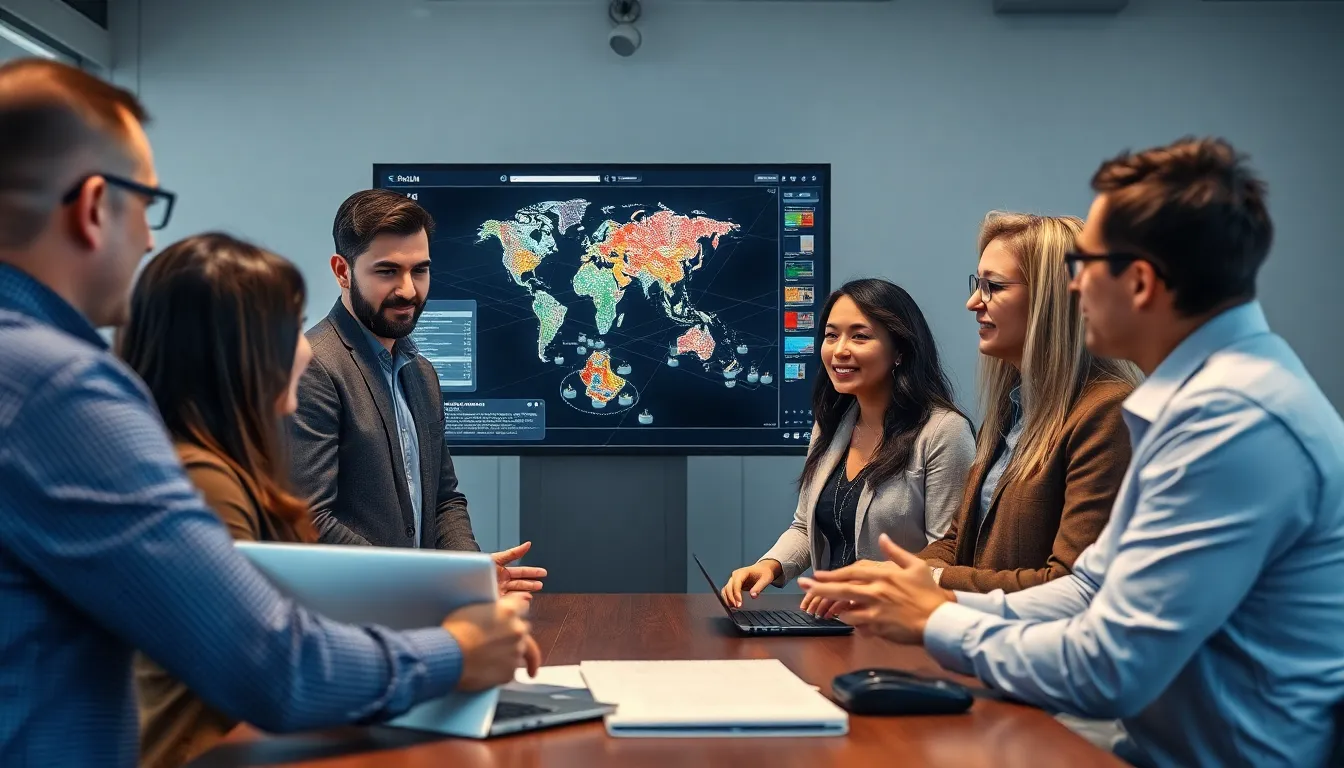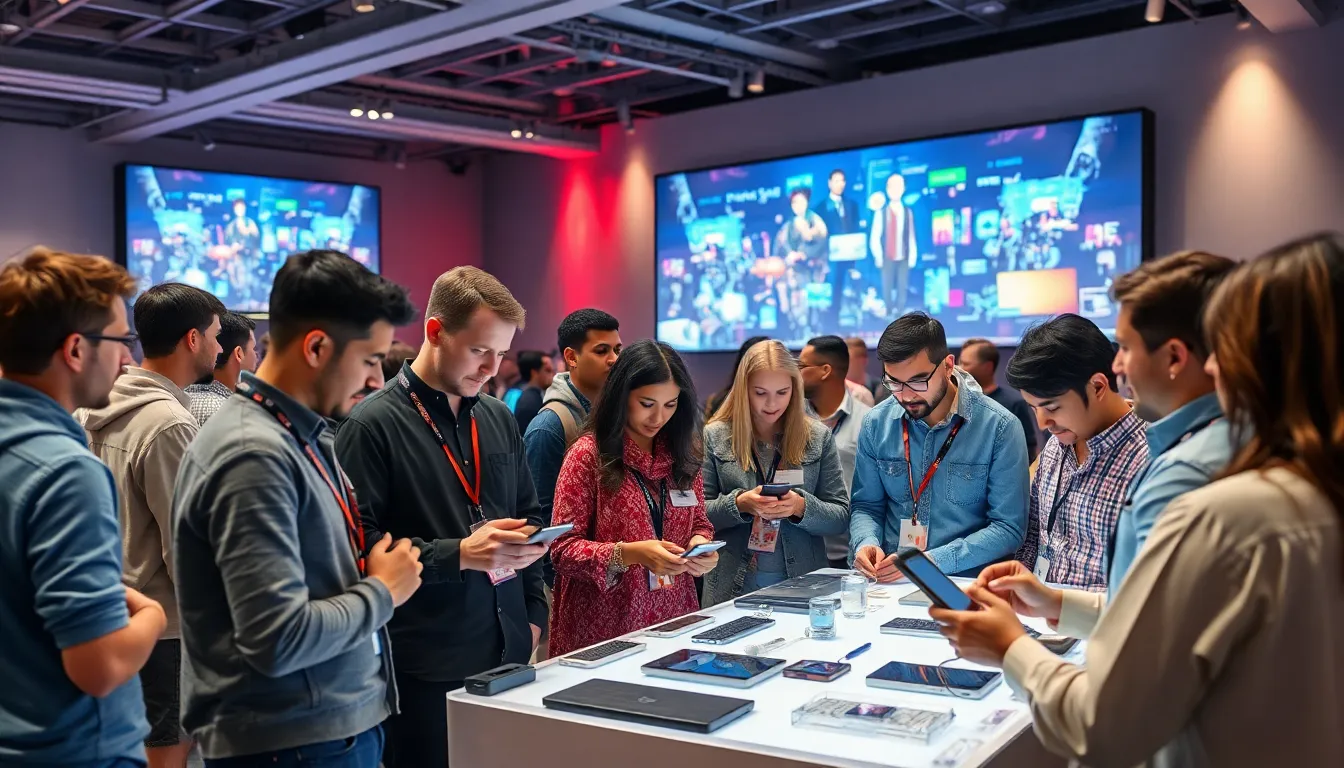Imagine having a virtual doppelgänger that not only looks like you but also thinks like you. Sounds like the plot of a sci-fi movie, right? Well, welcome to the fascinating world of AI and digital twins. These cutting-edge technologies are revolutionizing industries by creating real-time digital replicas of physical entities, allowing businesses to predict outcomes and optimize performance like never before.
Table of Contents
ToggleOverview of AI and Digital Twins
AI integrates seamlessly with digital twins, creating sophisticated models that replicate physical objects or systems. These digital counterparts leverage real-time data from sensors, improving accuracy in simulations and predictions. They enhance the understanding of complex systems by visualizing processes, behaviors, and potential outcomes.
Many industries adopt digital twins to optimize operations. In manufacturing, for instance, firms use them for predictive maintenance, reducing downtime and saving costs. Healthcare facilities apply this technology to monitor patient conditions and optimize treatment plans. Transportation sectors benefit from simulating traffic patterns, improving logistics and safety.
AI algorithms analyze the vast amounts of data generated by digital twins. Machine learning identifies trends and anomalies, enabling proactive decision-making. Construction projects employ digital twins to monitor progress and quality, ensuring timelines and budgets remain intact. Smart cities utilize these models for urban planning, enhancing resource management.
Integration of AI and digital twins facilitates collaboration across departments. Teams access consistent, accurate data to inform strategies and initiatives. Cloud computing further enhances this synergy, allowing for real-time updates and accessibility from diverse locations.
As technology advances, the potential applications of AI and digital twins expand. Future developments may include more sophisticated AI models, capable of deeper insights. Businesses increasingly rely on these innovations to maintain a competitive edge in rapidly evolving markets.
Key Components of Digital Twins
Digital twins rely on several key components to function effectively. These components work together to create accurate representations of physical entities.
Data Collection and Integration
Data collection serves as the foundation for digital twins. Sensors gather information from physical assets, providing real-time input about their condition. Integration of this data from multiple sources enhances the twin’s fidelity. Various platforms consolidate incoming data, delivering a holistic view of the environment. Analytics tools then process this information, transforming raw data into actionable insights. Observing trends from this data draws connections to performance metrics, allowing for better decision-making.
Real-Time Simulation
Real-time simulation allows digital twins to mirror their physical counterparts continuously. This process creates dynamic models that adapt to changes in the physical world instantly. Users can test different scenarios through simulations, assessing potential outcomes without risks. Feedback from these simulations helps refine business strategies by visualizing the impact of decisions. Utilizing advanced algorithms for predictive analysis further elevates simulation accuracy. Engaging stakeholders with timely updates fosters collaboration and informed decision-making.
Role of AI in Enhancing Digital Twins
AI plays a crucial role in maximizing the potential of digital twins. The marriage of AI technologies with digital twins creates robust models that provide deeper insights into physical assets.
Predictive Analytics
Predictive analytics leverages real-time data from digital twins to forecast future outcomes. It transforms vast datasets into forecasts, allowing organizations to anticipate maintenance needs and operational challenges. Businesses can reduce downtime and optimize resource allocation effectively through proactive insights. These analytics solutions identify patterns in historical data, refining accuracy of simulations. Enhanced decision-making results from evidence-based predictions that drive operational efficiency. Overall, predictive analytics empowers companies to stay ahead of emerging trends, securing a competitive advantage.
Machine Learning Applications
Machine learning applications deepen the functionality of digital twins with continuous learning capabilities. These algorithms process enormous quantities of data efficiently, identifying anomalies and trends that inform strategic choices. As new data becomes available, models evolve, enhancing precision of simulations and outcomes. Organizations utilize machine learning to improve product designs, streamline processes, and develop personalized customer experiences. Collaborative user insights get transformed into actionable strategies through machine learning. Additionally, advanced algorithms optimize operations across industries, increasing adaptability to changing market demands.
Use Cases of AI and Digital Twins
AI and digital twins offer transformative advantages across various sectors, driving efficiency, innovation, and informed decision-making.
Manufacturing Industry
Digital twins in manufacturing create precise reflections of physical assets, enabling continuous monitoring. Real-time data from machinery allows for predictive maintenance, reducing unplanned downtime. Companies can simulate production processes, identifying bottlenecks and optimizing throughput. By analyzing operational data, organizations enhance quality control measures, minimizing defects. For example, GE employs digital twins to optimize jet engine performance, resulting in significant cost savings and improved safety. Enhanced analytics streamline processes, allowing manufacturers to remain competitive while responding swiftly to market changes.
Smart Cities
Smart cities leverage AI and digital twins to improve urban living conditions. Virtual replicas of infrastructure, such as roads and utilities, collect real-time sensory data to manage resources more efficiently. City planners can simulate traffic patterns, improving transportation flow and reducing congestion. Environmental monitoring through digital twins helps in assessing air quality, contributing to public health initiatives. For instance, cities like Singapore utilize digital twins to manage urban development effectively, enhancing sustainability and quality of life. Collaborative data access across departments streams projects, fostering innovations in urban services and public safety.
Challenges and Limitations
AI and digital twins face several challenges that impact their effectiveness and adoption in various industries. Addressing these limitations ensures the successful integration of these technologies.
Data Security Concerns
Data security poses significant risks for digital twins. Sensitive information used to create and manage these replicas may be vulnerable to cyberattacks. Organizations often struggle with securing data across multiple sources, making it challenging to maintain confidentiality. Unauthorized access can lead to data manipulation, compromising the accuracy of digital twins. Compliance with regulations adds another layer of complexity, as organizations navigate the legal requirements surrounding data protection. Preventive measures, such as encryption and regular audits, become essential for protecting proprietary information.
Integration Difficulties
Integration difficulties often arise when incorporating digital twins into existing systems. Compatibility issues between legacy infrastructure and modern technologies create obstacles for seamless data flow. Businesses may find that existing software lacks the capacity to effectively support advanced analytics required for AI-driven digital twins. Efforts to harmonize data formats and standards can be resource-intensive, hindering swift implementation. Continuous collaboration across departments remains crucial, as fostering communication promotes smoother integration processes. Without proper alignment, organizations face challenges in leveraging the full potential of digital twins and AI integration.
Future Trends and Innovations
Emerging trends in AI and digital twins signal a transformative shift across multiple sectors. The development of more sophisticated models emphasizes enhanced predictive capabilities, driving businesses to rely on advanced simulations for accurate operational insights. Integration of AI technologies fosters automated decision-making, allowing businesses to respond rapidly to changes in their environments.
Collaborative approaches to data management stand out, enabling seamless integration of diverse data sources into digital twin frameworks. Increasingly, organizations focus on leveraging cloud technologies for real-time data access and sharing, promoting efficiency. Enhanced analytics tools facilitate deeper insights, making predictive maintenance not just feasible but practical in everyday operations.
As industries adopt machine learning strategies, they uncover new patterns within data. Manufacturers benefit from tailored production processes, significantly boosting productivity and cost savings. The construction sector also sees significant innovation, with digital twins predicting project completion timelines and optimizing resource use.
Smart cities exemplify how AI and digital twins create a more sustainable urban environment. By simulating traffic patterns and monitoring energy consumption, city planners can enhance the quality of life for residents. These technologies also address environmental concerns, supporting cities in reducing their carbon footprints.
Emerging challenges emphasize the need for robust cybersecurity measures and system integration strategies. Organizations increasingly prioritize data protection against cyber threats. Developing comprehensive frameworks allows for overcoming integration hurdles and maximizing the advantages offered by AI and digital twins.
Advancements in user interfaces simplify interactions with digital twins, broadening accessibility for non-technical users. Companies continually seek solutions that make these technologies beneficial for various stakeholders. With continuous innovations, the potential applications seem boundless, providing countless opportunities for those ready to embrace change.
Conclusion
AI and digital twins are reshaping how industries operate by providing real-time insights and predictive capabilities. As organizations adopt these technologies, they unlock new levels of efficiency and innovation. The synergy between AI and digital twins not only enhances decision-making but also fosters collaboration across departments.
Despite the challenges of data security and system integration, the benefits far outweigh the obstacles. Continuous advancements and emerging trends promise to expand the applications of these technologies. Companies willing to embrace AI and digital twins will find themselves at the forefront of their industries, ready to tackle future challenges with confidence.








